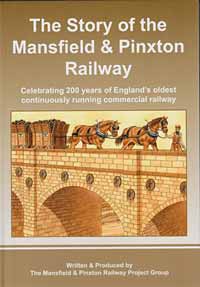Book reviews, Spring 2021
St Ann’s, The End of an Era By Peter Richardson
This book contains a photographic record of Peter’s memories of the Nottingham area of St. Ann in the 1960s, when his grandparents lived there, and when it was going through the process of being demolished and rebuilt. At the time Peter was a student at Derby College of Art, following a course in photojournalism, and he used his visits to his grandparents to photograph some of the scenes he saw, which clearly became etched in his memory. Peter is to be congratulated for the way in which his book captures the delightfully honest character and social history of this area of Nottingham during a time of incredibly traumatic change.
The book is a collection of photographs of people and places, characters and scenes, which reveal the daily life and experience of an area called ‘home’ by those who lived there. The sections deal with an examination of The Community, of Pubs, Shops, Factories and Churches, of Front doors and Streets, of Back Yards and Alleys, and of Washday. In his photographs David is able to convey not just the effects of the ugly demolition process that was happening at the time, but also the genuine natural-ness and happiness of a life which was being lost forever.
We all have memories of our earlier life which we always assume at the time to be the norm for the lives of our friends and other people too; it is only as we grow older and our experience widens that we begin to realise how different other people’s life-experience is so uniquely different from our own. Looking at today, Peter’s record may appear a sad historical disaster for the people of St Ann’s, but he manages to capture a snap-shot of people, situations and home-life in which the people had grown up and lived in for most of their life. To these people, life in St Ann’s was comfortable and happy and settled, and the photographs show this to have been true. The quality of the photographs, and Peter’s ability to capture a record of people in situ in varying situations, warts and all, is excellent. The comments which accompany the scenes are similarly a true reflection of ‘life as it was’. Overall, Peter records a delightful contrast of comfortable living during a time of earth-shattering change.
Alan Langton
The Story of the Mansfield and Pinxton Railway by the Mansfield and Pinxton Railway Project Group 2020 £8.00 incl P&P from Trevor Lewis (trevorandpam@gmail.com)

2019 saw the 200th anniversary of the founding of the Mansfield and Pinxton Railway. Although by no means the earliest railway in the country, it can claim fame as the oldest continually running commercial railway in England. This fascinating, carefully researched, well written and beautifully illustrated book is the culmination of a Heritage Lottery-funded project involving four local organisations. The group was set up in 2016 to commemorate the opening of the railway on 13th April 1819.
The book covers the earliest days of the railway through to today, when the line is still in use for passenger services. The railway was built after much debate as an alternative to constructing more canals, to connect Mansfield to the Cromford Canal. In the early phase, the railway had horse-drawn wagons to carry coal and other materials, but in 1845-1850, steam locomotives were introduced. The early railway was dangerous, as numerous reports of accidents testify. New stations were built and new rolling stock, including much improved passenger carriages, gradually introduced. The railways interconnected with others, and passengers could travel from Mansfield to as far as Scarborough.
Following the infamous Beeching Report in 1963, the stations on the line were closed, leaving Mansfield as the largest town in the country without its own railway station. The rails, however, were kept and the line used for transport of goods. At the end of the 20th century, passenger services were reintroduced. New stations were built at Sutton Parkway (1995) and Kirkby (1996), and the Mansfield station was refurbished and reopened in 2001.
The book includes much detailed information for the railway enthusiast and there is a list of references and a glossary of railway terms. Accompanying the book and included in the price is a smaller A5 booklet entitled ‘Walking the Line’. It gives details of several walks along and around the original site of the Mansfield and Pinxton Railway. The two books together represent excellent value and give a fascinating insight into this important piece of railway heritage that is still in modern use.
More information on the project can be found in Newsletter issue 94 Winter 2018.
John Wilson